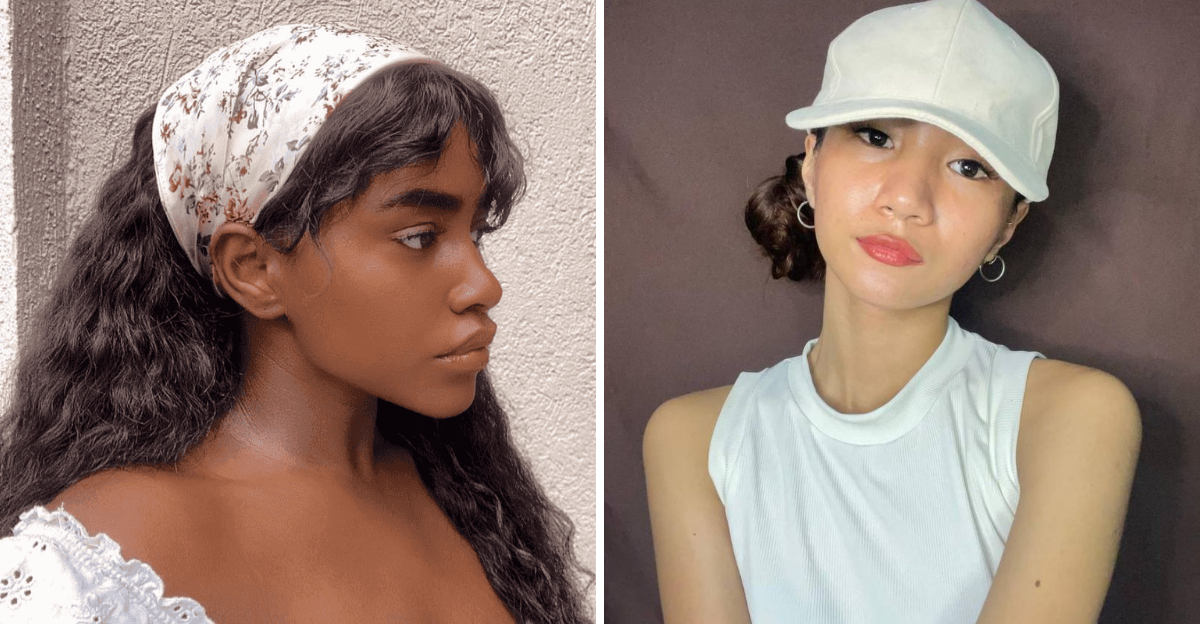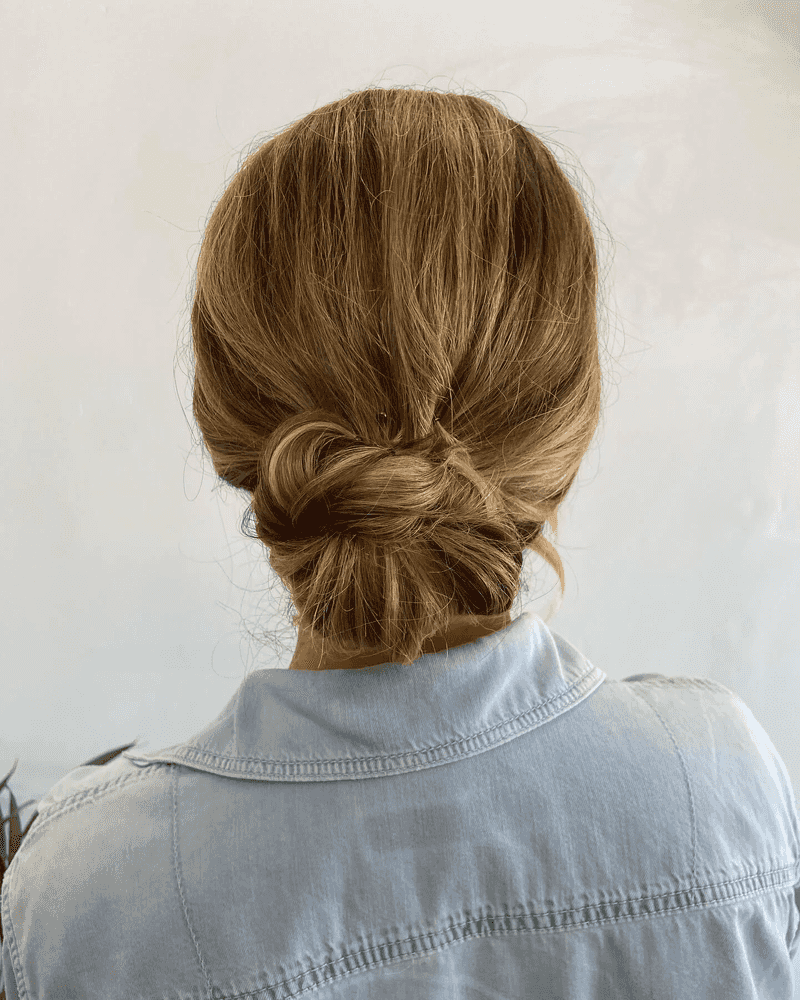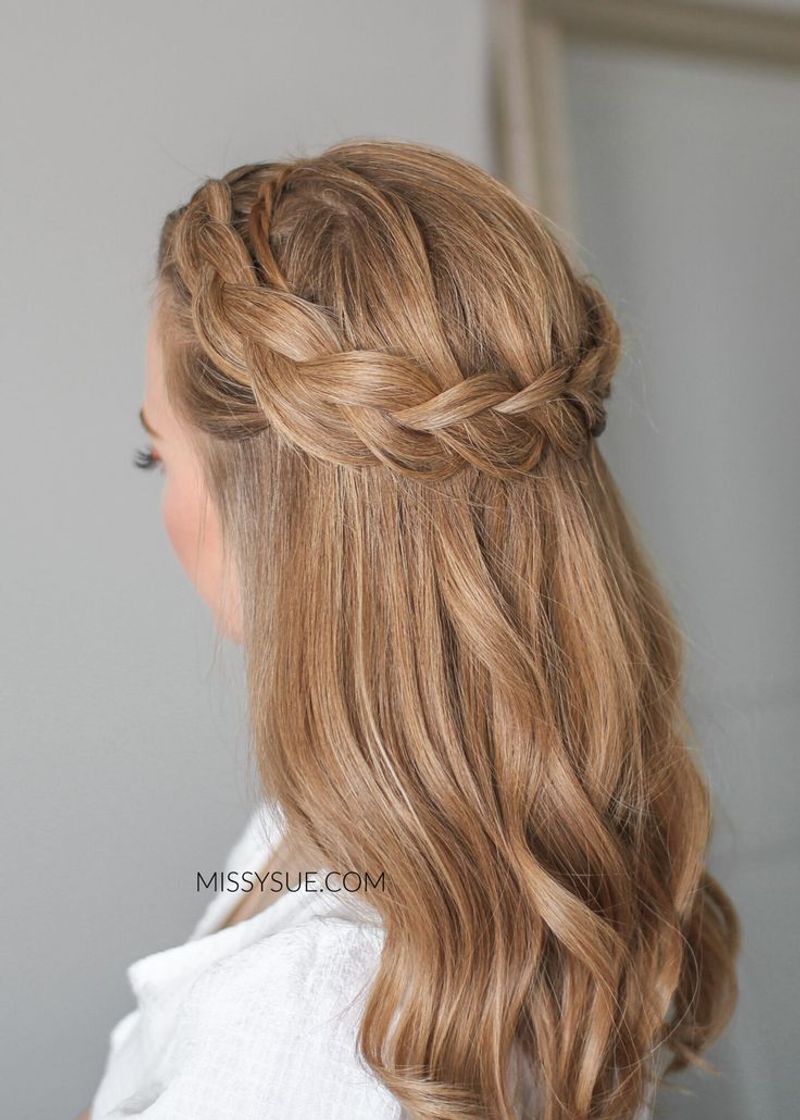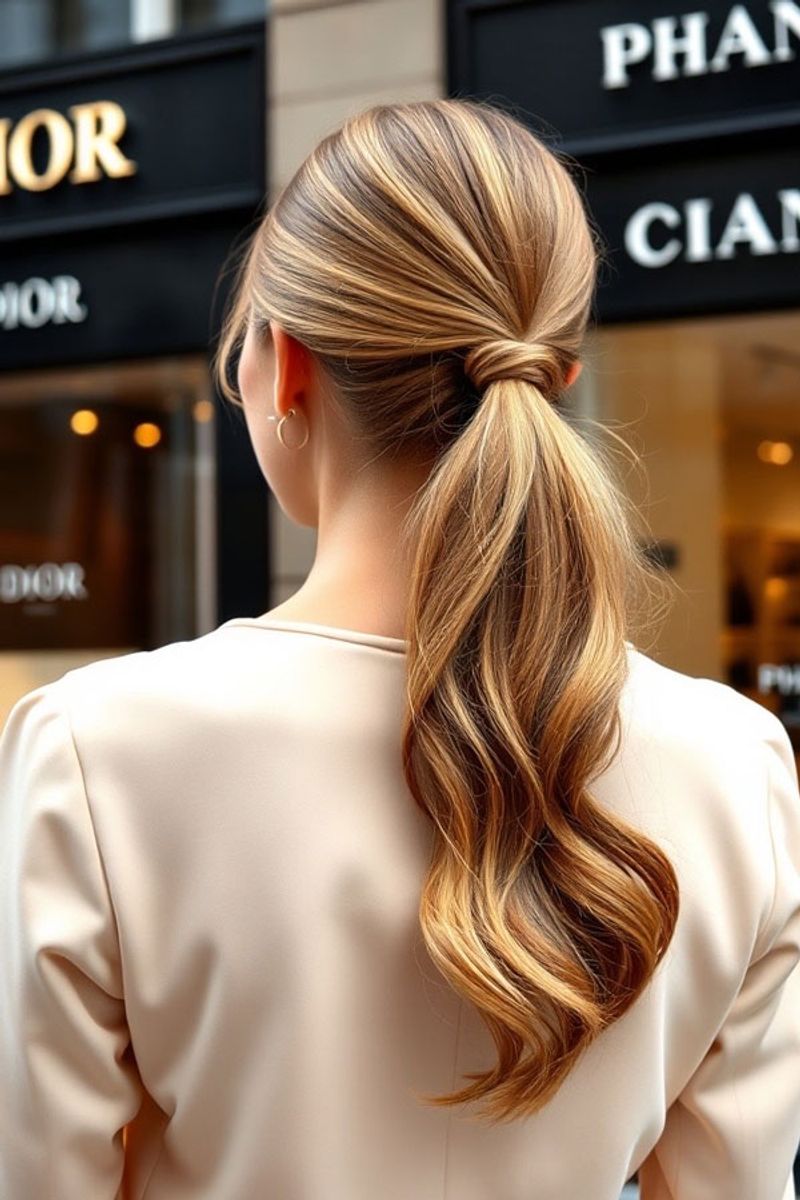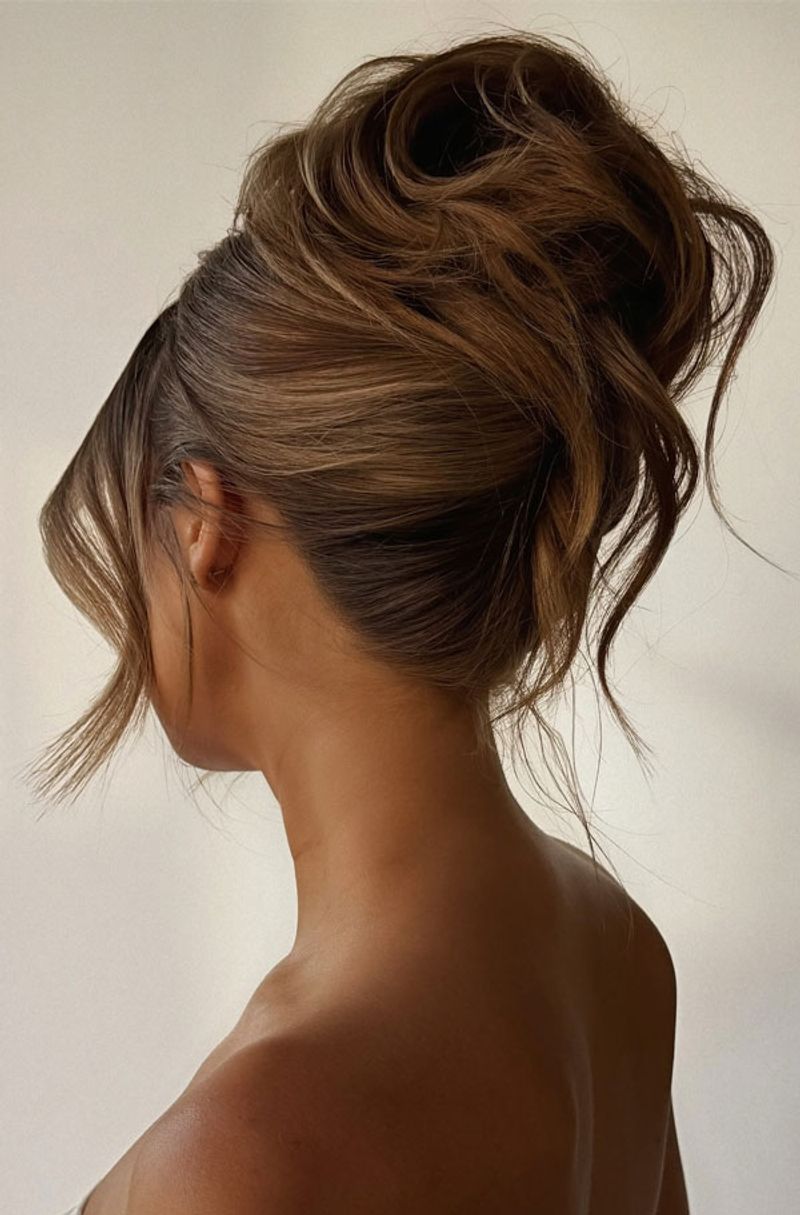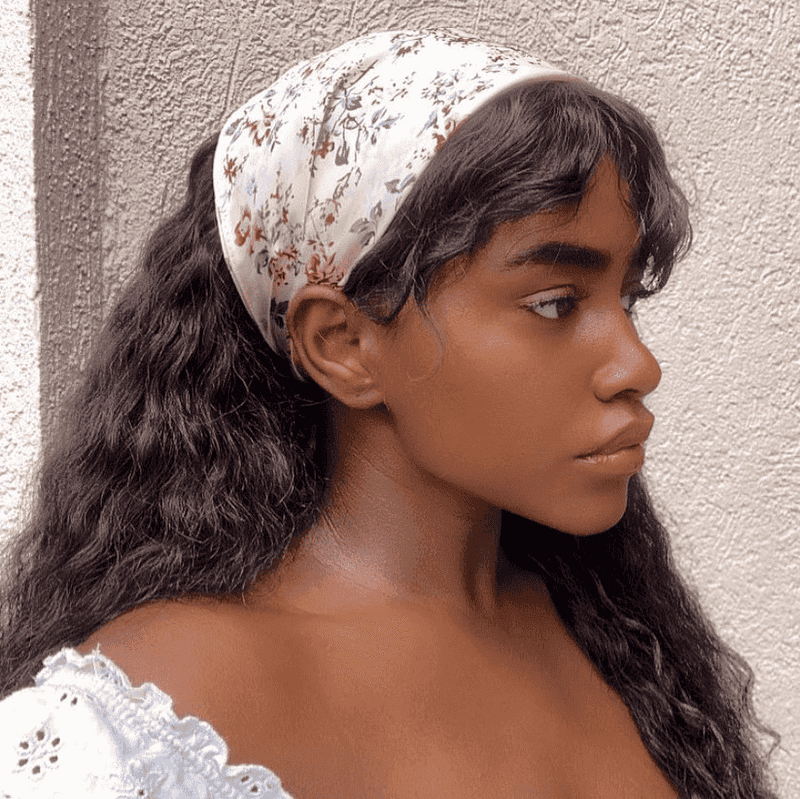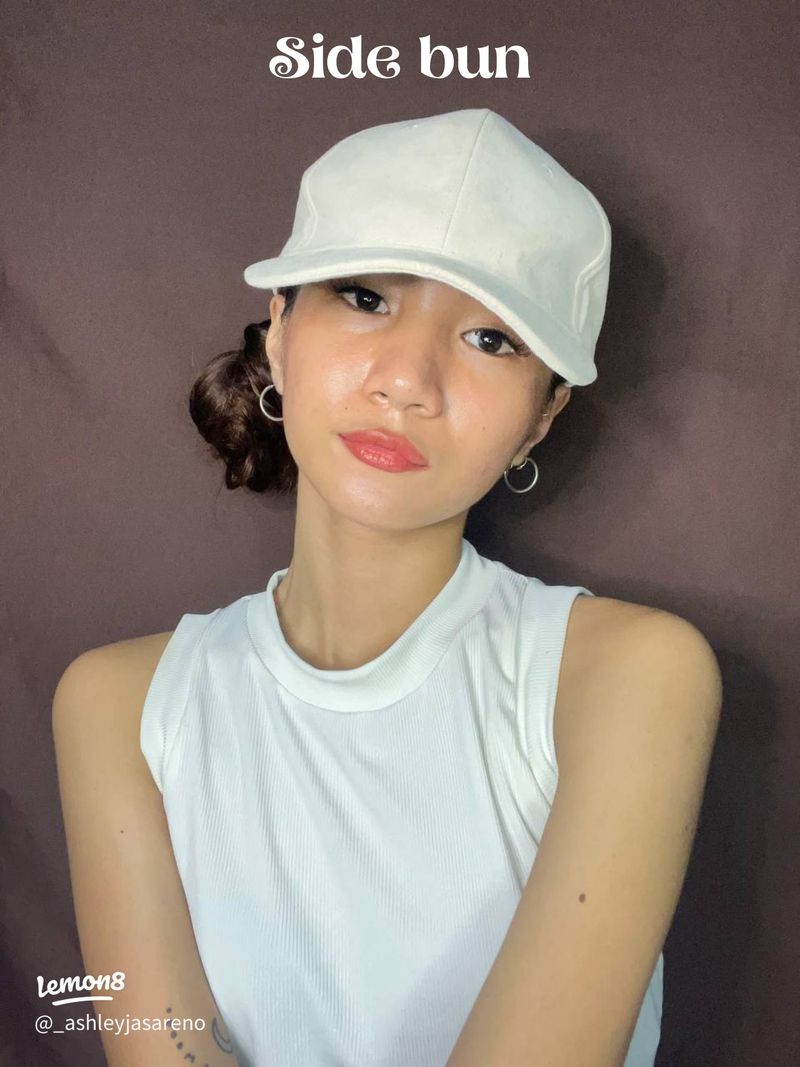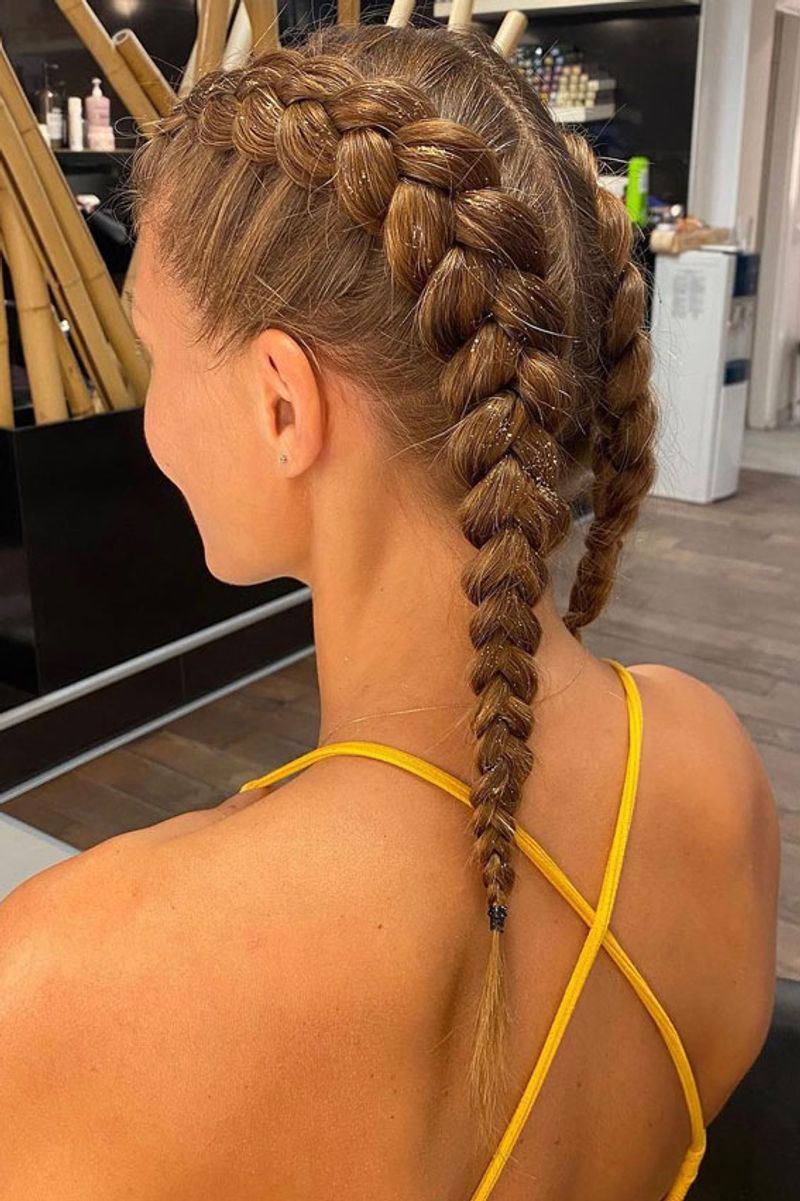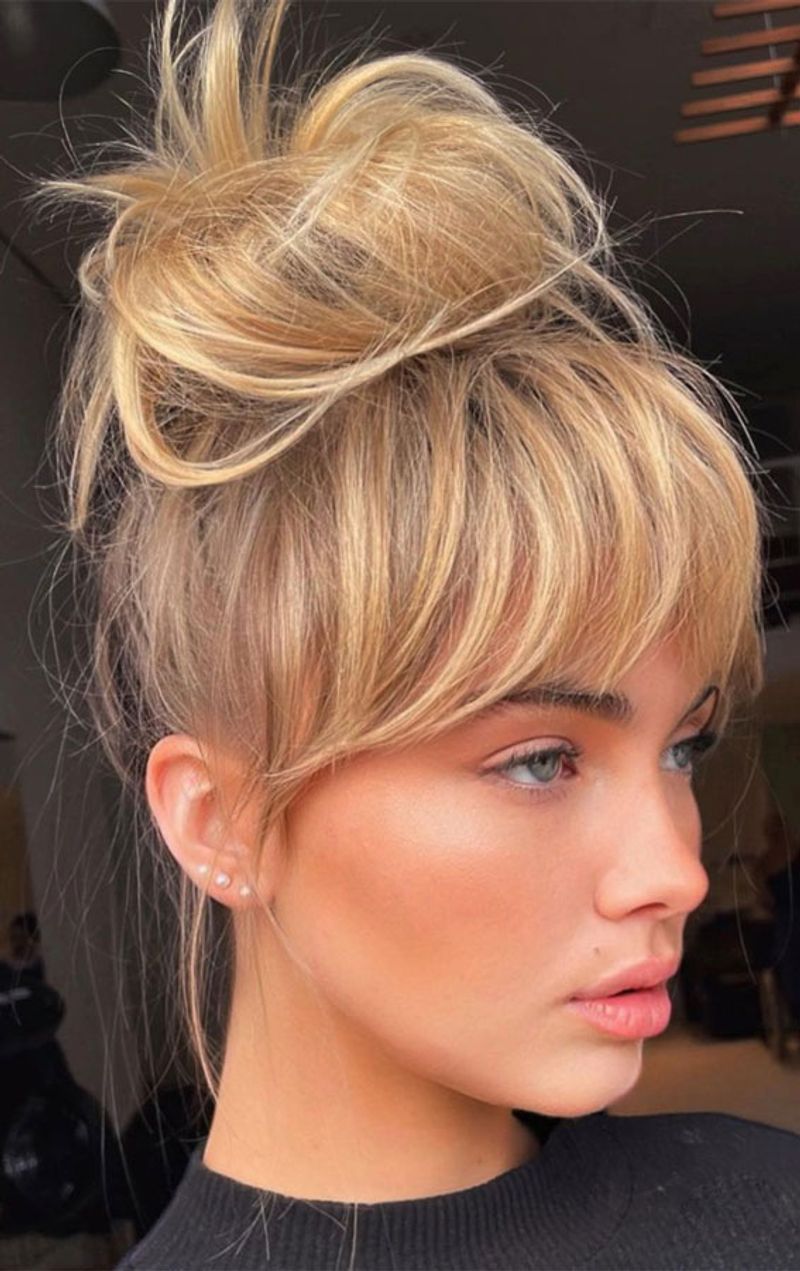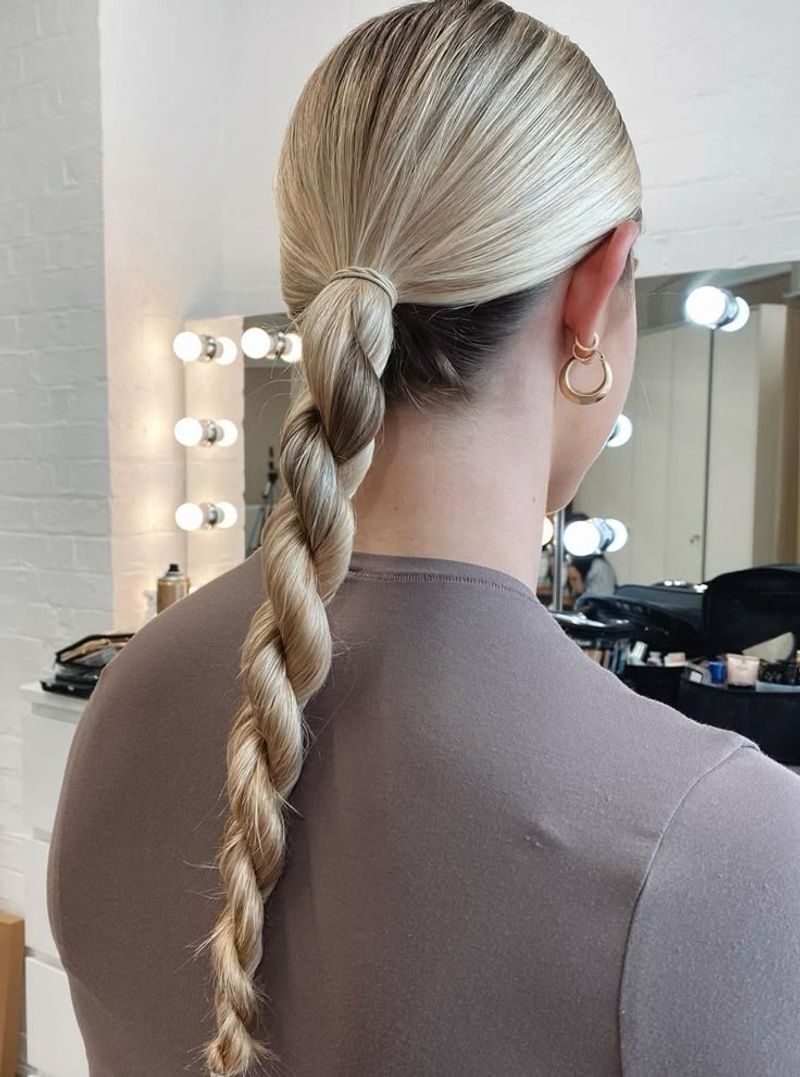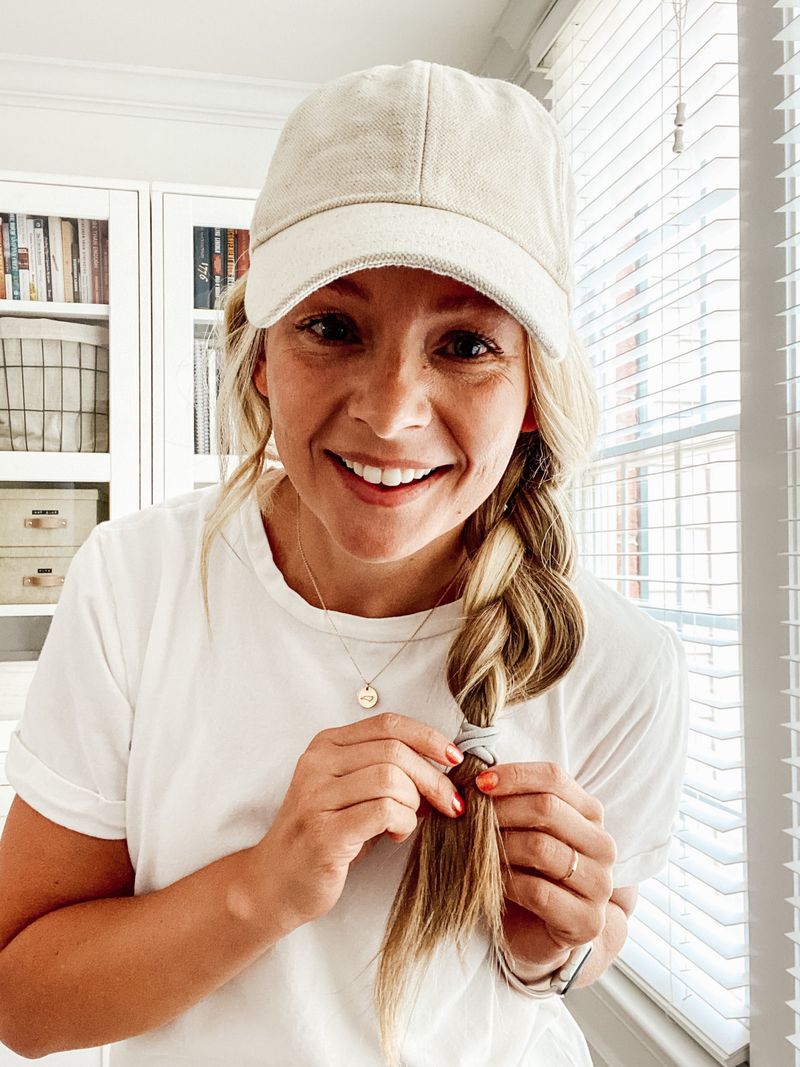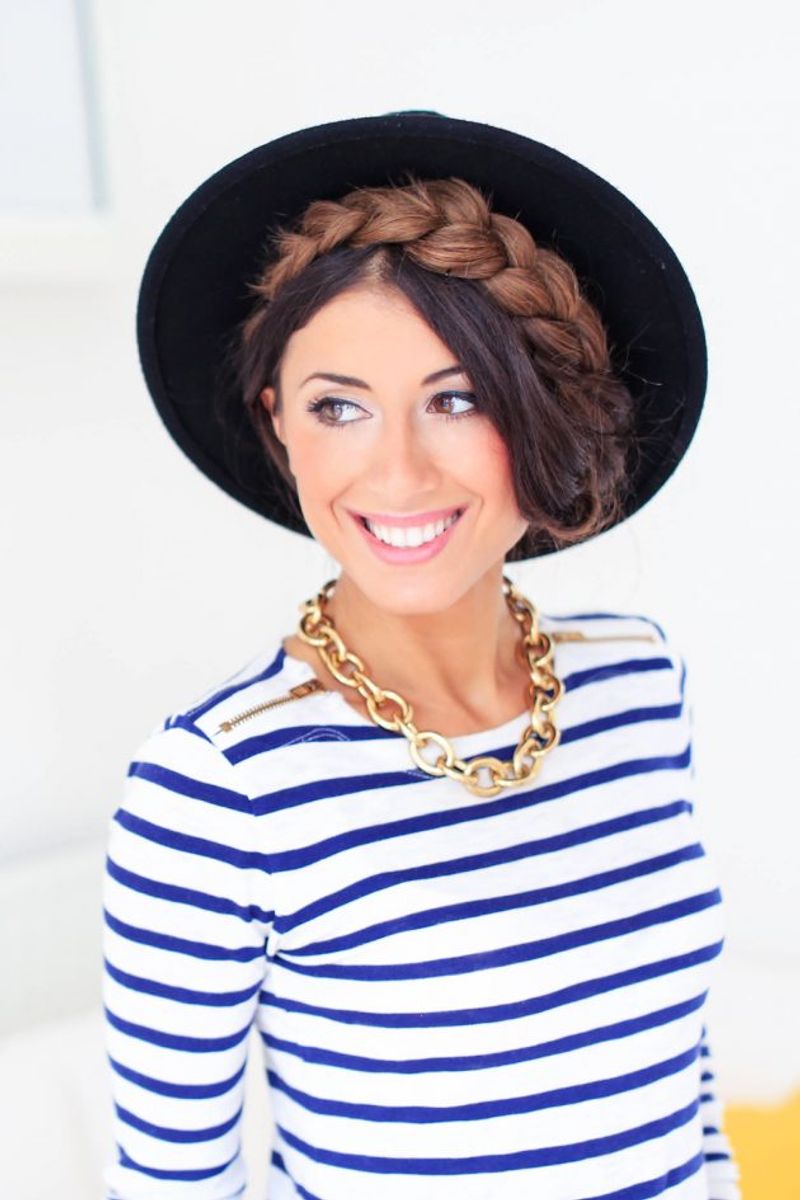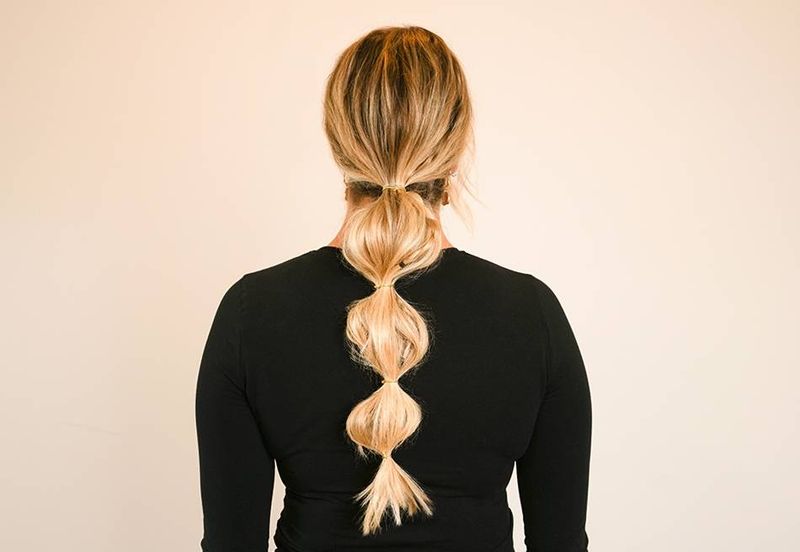Winter accessories like scarves, hats, and coats keep us warm, but they can wreak havoc on our hairstyles. Nobody wants to battle hat hair or scarf-flattened locks when they step indoors. The good news is that certain hairstyles work beautifully with winter wear, letting you stay both stylish and comfortable no matter the weather.
1. Low Messy Bun
A low messy bun sits perfectly at the nape of your neck, making it ideal for scarves and high-collared coats. The slightly undone texture means you won’t stress if your bun gets a bit disheveled from your winter accessories. Styling is simple – gather hair at the nape, twist loosely, and secure with bobby pins. Leave a few face-framing strands free for a softer look. The best part? This style actually looks better as the day goes on. When you remove your hat or unwrap your scarf, just fluff the bun with your fingers for instant volume restoration.
2. Half-Up Crown Braid
Crown braids work magic with winter gear because they create a flat base for hats while keeping hair secure and styled. The half-up approach lets you enjoy the security of a braid with the warmth of hair down around your shoulders. Start by taking sections from each temple, braiding backward, and pinning where they meet. The top remains secure under hats, while the loose bottom portion keeps your neck cozy beneath scarves. Bonus feature: this versatile style transitions beautifully from outdoor bundling to indoor elegance without needing major adjustments.
Related: -7 Straight-Hair Problems No One Talks About And 8 Easy Fixes That Shine
3. Sleek Low Ponytail
Sleek low ponytails remain the unsung heroes of winter hairstyling. Positioned at the nape, they avoid uncomfortable bumps under hats while preventing tangles when wrapped in scarves. Smoothing serum is your secret weapon here—apply to damp hair before blow-drying straight. Gather hair at the nape, secure with a covered elastic, and wrap a small section of hair around the band for a polished finish. For extra protection against winter static, try a silk scrunchie instead of a regular elastic. The smooth fabric reduces friction and helps maintain that enviable sleekness even after hat removal.
4. French Twist
French twists offer sophistication that pairs beautifully with structured wool coats and elegant winter accessories. The compact nature of this updo prevents awkward hat bumps while maintaining a timeless elegance. Brush hair smoothly to one side, twist upward along the back of your head, and tuck ends before securing with bobby pins. A light mist of flexible-hold hairspray keeps everything in place without stiffness. The vertical orientation of this style works particularly well with ear-warming headbands and earmuffs, allowing you to stay warm without sacrificing style. When removing winter accessories, simply tighten any loose pins for an instantly refreshed look.
5. Loose Waves with Deep Side Part
Loose waves with a deep side part offer the perfect solution for hat-wearers who want to maintain volume. The deep part creates natural lift that bounces back after hat removal, while waves add texture that resists flattening. Create this look by parting damp hair deeply to one side and braiding loosely before bed. In the morning, unravel for effortless waves that work beautifully with winter gear. The genius of this style lies in its resilience – the waves actually gain character from slight compression under hats. A quick finger-tousle and part reinforcement are all you need after removing your beanie or beret.
6. Twisted Side Bun
Side buns offer asymmetrical charm while solving practical winter hair challenges. Positioned just above one ear, they avoid the central back placement that can make leaning against hoods uncomfortable. Create this look by gathering hair into a low side ponytail, twisting until it begins coiling naturally, then wrapping around the base. The placement works perfectly with asymmetrical coat collars and one-sided scarf draping. Unlike centered buns that can get squished between your head and hat, side placement maintains the style’s integrity. A spritz of texturizing spray beforehand gives fine hair enough grip to stay put through winter weather adventures.
7. Double Dutch Braids
Double Dutch braids (inverted French braids) have made a stylish comeback, and they’re practically designed for winter wear. Lying flat against your head, they create no bumps under hats while keeping every strand secure against wind. Starting at the hairline, create two braids by crossing sections under rather than over, working toward the nape. Secure with small elastics that won’t create uncomfortable pressure points under hats. The flat profile makes this style exceptionally hat-friendly, while the braided texture prevents the dreaded static electricity that plagues winter hair. For extra style points, leave the ends loose and wavy below your scarf line.
8. Top Knot with Textured Bangs
Top knots sit high enough to avoid coat collar interference while keeping most hair contained. The addition of textured bangs frames your face beautifully when bundled up in winter accessories. Position your bun high on the crown where it won’t get crushed by hat brims. The textured bangs should be long enough to peek out from under beanies or be swept slightly to one side with structured hats. This combination works exceptionally well because the exposed bangs area is minimal enough to avoid major hat hair issues. Meanwhile, the knot itself stays protected and intact, ready for the moment you step indoors and unveil your still-perfect style.
9. Twisted Rope Braid Ponytail
Rope braids offer sleek sophistication with superior staying power through winter weather challenges. The twisted structure resists frizzing from static electricity that often plagues regular ponytails in dry winter air. Create by dividing a ponytail into two sections, twisting each clockwise, then wrapping them counterclockwise around each other. The resulting texture maintains interest even when partially hidden under hats and scarves. Another advantage? The twisted pattern actually strengthens when slightly dampened by snow or light rain, unlike straight styles that instantly fall flat. For maximum winter protection, position the ponytail low enough to tuck into high collars when extreme weather hits.
10. Side-Swept Fishtail Braid
Side-swept fishtail braids combine romance with practicality for winter styling. Positioned over one shoulder, they won’t get caught between your back and coat, preventing painful pulling when you move. The intricate weaving pattern of a fishtail maintains visual interest even when partially hidden by scarves. For best results, start with slightly textured hair – second-day hair works perfectly for grip. Keep the braid relatively loose while creating it, then gently pull on the edges to add volume and texture before heading out. The slightly disheveled look means you won’t stress if your winter accessories cause minor disruptions to the perfect pattern throughout the day.
11. Twisted Crown Updo
Twisted crown updos offer elegant protection against winter elements. The style wraps around your head like a natural headband, creating a flat surface that prevents awkward hat bumps while keeping all hair secure. Begin by separating front sections on both sides, twisting away from your face, and pinning at the back. Continue working around your head, incorporating all hair into the twisted crown pattern. The resulting style sits close to your head with no protruding sections to get crushed by hats. A misting of medium-hold hairspray helps maintain the structure through multiple hat changes during a busy winter day, while the all-up design keeps hair from tangling in scarves.
12. Bubble Ponytail
Bubble ponytails offer playful texture that bounces back beautifully after hat removal. The segmented structure prevents the dreaded ponytail crease while adding visual interest that complements winter fashion. Create by securing a regular ponytail, then adding hair elastics every two inches down the length. Gently tug each section outward to create the bubble effect. The flexible nature allows for comfortable hat wearing. Position the ponytail high or low depending on your hat style – higher works well with beanies, while lower placement suits structured hats with brims. The segmented design actually helps prevent tangling in scarves and high collars, making it as practical as it is pretty.

